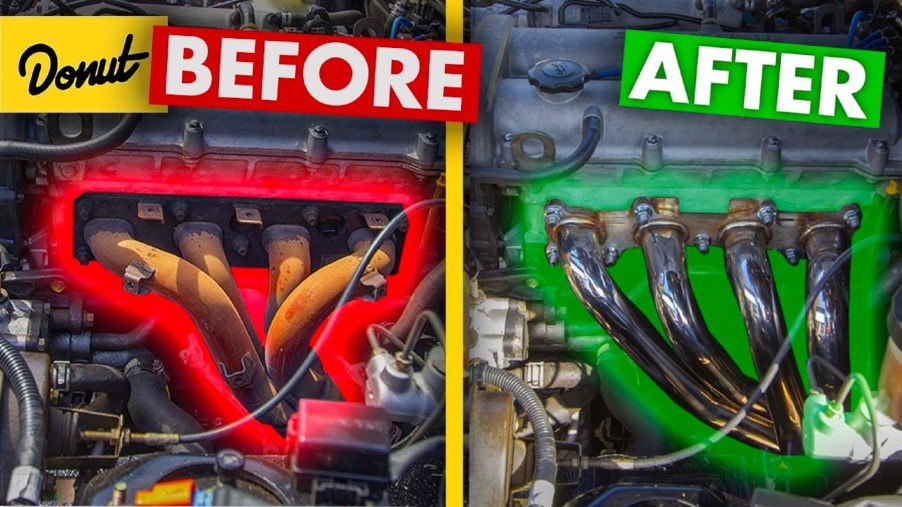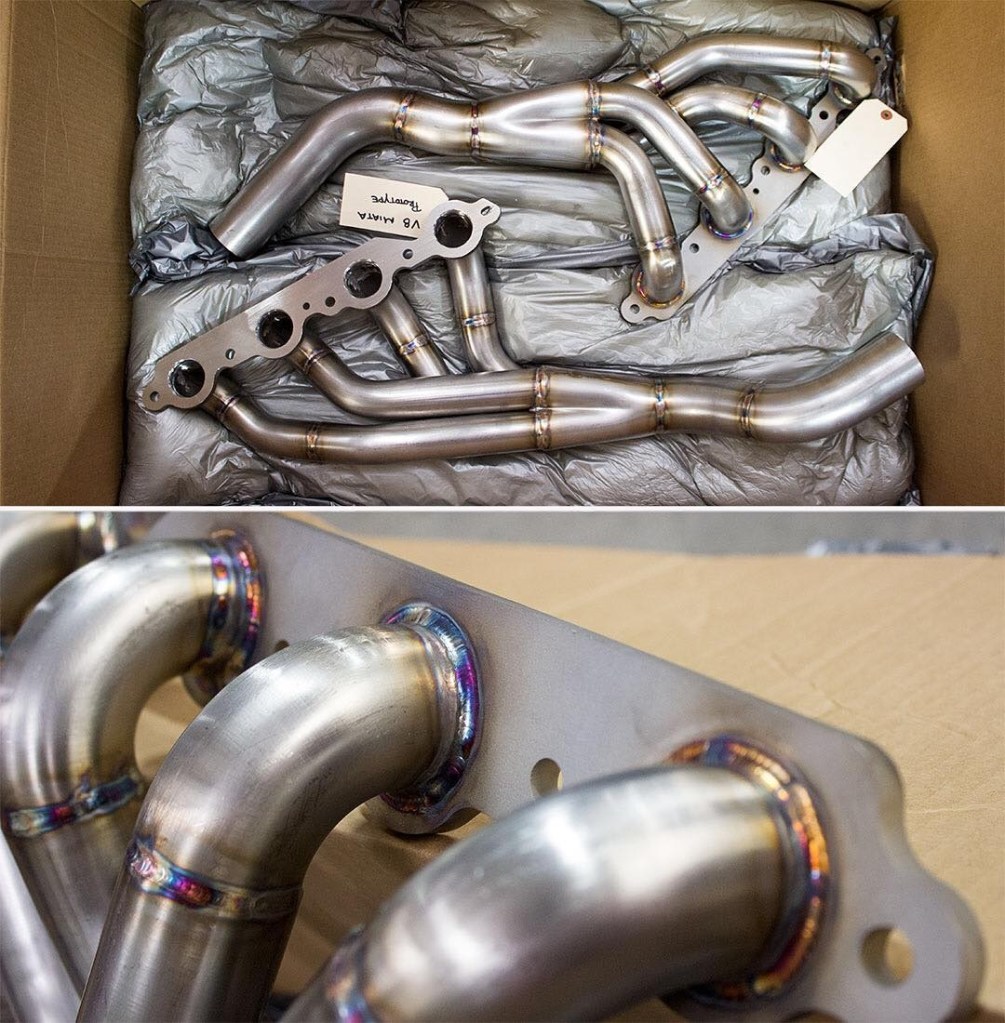
Do Aftermarket Exhaust Headers Really Add Performance?
Whether it’s through turbocharging or tuning the ECU, most horsepower-boosting modifications boil down to ‘more fuel and more air.’ Done improperly, though, and you’ll end up with a broken engine. However, there is another option that some claim is good for a few extra horses: aftermarket exhaust headers. But do they really work?
Exhaust headers vs. exhaust manifolds
Although they were somewhat common in the 60s and 70s, only a handful of manufacturers fit their cars with exhaust headers straight from the factory today, AutoAnything reports. Instead, most OEMs fit their gasoline and diesel engines with exhaust manifolds.
Your car’s exhaust isn’t just one long pipe. In addition to the muffler and catalytic converter, it’s comprised of a number of sub-sections. The exhaust manifold is the part attached directly to the engine, 1A Auto explains. It’s basically a block of metal with some small pipes attached to it. These pipes let exhaust gases leave the combustion chamber so the engine can keep running properly.
Visually, an exhaust header can look very similar to an exhaust manifold. Mostly because they both look like a collection of pipes. In fact, some vintage race car exhaust headers were called ‘bundles of snakes’ for that reason. However, there are a few differences between an exhaust header and an exhaust manifold.
Firstly, manifolds are typically made of cast iron, while headers are usually stainless steel, JB Tools reports. Cast iron is cheap and retains heat well, which improves catalytic converter efficiency. A few vehicles, like the 4th-gen Toyota 4Runner and NB Miata, had pre-cats built into their exhaust manifolds to take advantage of the added heat. However, repeated heating-and-cooling cycles can cause the manifolds to crack.
Secondly, manifolds feed the exhaust gases quickly into one space, CJ Pony Parts explains. Headers, on the other hand, have longer, individual tubes. While the exhaust manifold’s design makes it compact and easier to install, it does have some drawbacks.
Does an aftermarket exhaust header add horsepower?
To avoid the cracking issue, exhaust manifolds typically have to be made with thicker walls than the headers. This shrinks the space gases can travel through. Combine that with the compact size, and you get something of an exhaust bottleneck. It’s called ‘backpressure,’ WheelZine explains, and it prevents the combustion chamber from getting totally fresh air. Which means, over time, less horsepower and torque.
Exhaust headers, though, with their longer individual tubes, are designed to prevent this. In addition, the longer tubes create a ‘scavenging’ effect, to pull exhaust gases faster out of the chamber. At least, that’s what the aftermarket suppliers claim on paper. But does that play out in real life? Donut Media tried to find out using an NA Miata.
Donut Media already installed a new exhaust pipe and air intake in the Miata. If you want the best possible performance from aftermarket headers, those mods are practically a requirement, CarID explains.
With the stock exhaust manifold, the Miata put out 104 hp. The aftermarket exhaust header added about 4 hp on its own and broadened the car’s power curve. So, it didn’t add much power, but it added it across the board.
Pricing and legality

Although installing an exhaust header can be done in a day, 4 hp doesn’t sound like much performance gain. Especially considering that, while a Racing Beat Miata header costs $455, Ford offers a 50-hp tune for the Ranger for $825. And Ford’s kit is 50-state emissions legal.
That’s the biggest problem that comes with installing an exhaust header: legality. The longer tubes can interfere with emissions equipment, or even require the equipment to be removed altogether. Which is fine if you’re driving the car exclusively on the race track. On public roads, though, that’s a federal crime, HotCars reports. However, there are some headers that do pass emissions, Street Muscle reports.
Ultimately, are aftermarket exhaust headers effective? If you’re chasing the last bit of performance out of a build, potentially. But for the average driver, they really don’t make much of a difference.
Follow more updates from MotorBiscuit on our Facebook page.


